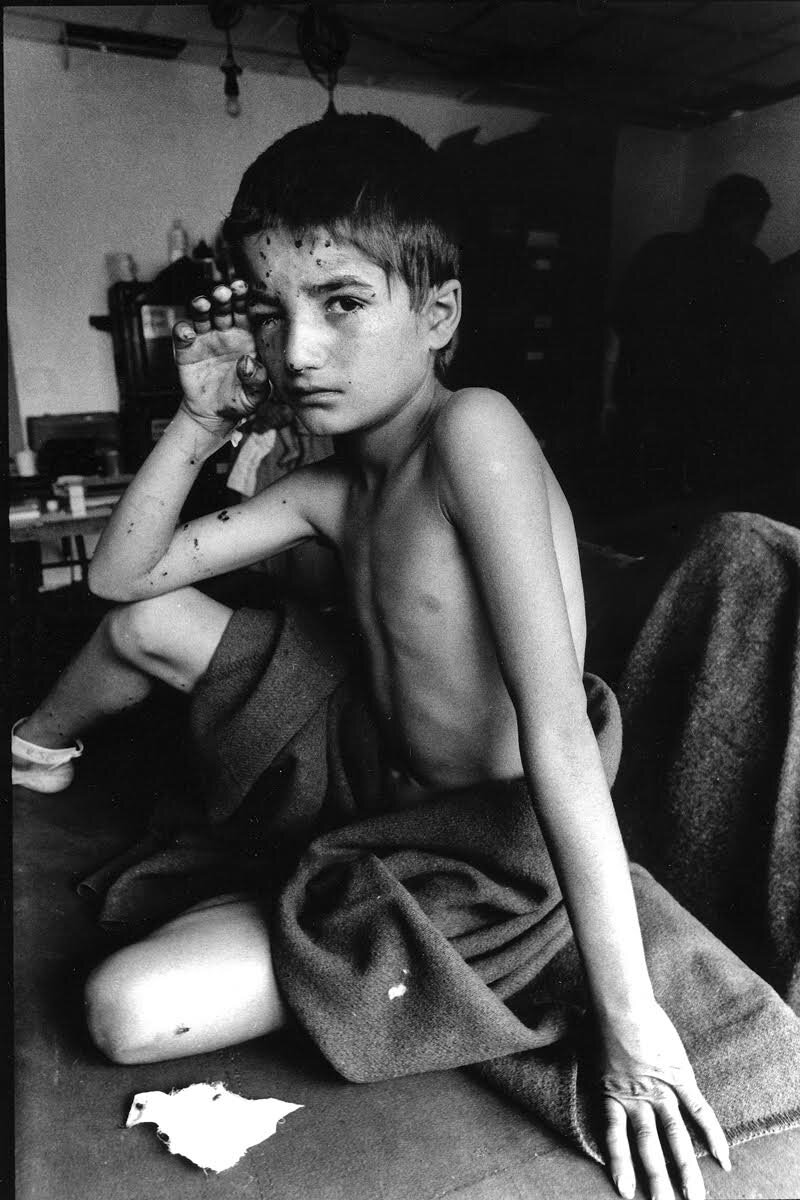My Career In 7 Pictures
Lorrie Graham pioneered the way for women photographers in Australia. To celebrate World Photography Day, the celebrated photo-journalist talks us through her career, so far, in pictures.
I was given my first camera, a Kodak plastic Brownie, at the age of eight and when I was 14, my father gave me a book on legendary Life photographer Margaret Bourke-White. She really captured my imagination. She spent years travelling, and photographing, the world and was the first woman allowed to work in combat zones during World War II. I thought, “that’s the job for me!” and never wavered from that.
But it was hard to get a start. In 1970, when I was 16, a friend of the family told me I should find a job with a newspaper and that would be the best training for me. One of the biggest newspaper groups in Australia wouldn’t even see me because I was a woman. Another one kept putting up excuses, like saying there were no women’s toilets on the photographic floor and that I wouldn’t be able to handle the men’s bad language, all that kind of crap. So I put together a portfolio of published images to press my case. I used to shoot photos for Rolling Stone magazine in return for film and free tickets to concerts. One of my favourite shots for them was of the US blues artist B.B.King (below), performing at the Hordern Pavilion in Sydney.
It was the UN’s International Women’s Year in 1975 that actually opened the door for me. With so much focus on women's rights and the Australian government launching programs to change attitudes, reduce discrimination and encourage women’s creativity, I could no longer be refused a job in photography. So The Sydney Morning Herald gave me a cadetship. I spent a lot of time in the dark room, in an extremely blokey environment, where 10 photographers would run in from sporting events and throw their prints at you. I’d look at their pictures and yell instructions back at them if they were over- or under-exposed, and they weren’t terribly happy to hear that from a woman. It was pretty brutal.
I decided I wanted to work in London after I finished my cadetship. The Observer was known as a real photographers’ newspaper, as everything was designed around the images. It was the pinnacle. I just went to Fleet Street and asked for a gig. They were surprised and gave me a go. It was a wonderful time. They sent me to Scotland for a week to shoot a merchant banker in his castle, I shot Princess Margaret and Andy Warhol (below). He was a pretty boring man in real life though, not a great personality.
When I returned to Australia in 1981, I joined weekly newspaper The National Times, which later became The Times on Sunday. At that time, it had five cartoonists and two artists … and no photographers. It didn’t run photographs. Undeterred, I asked if I could have a job, and they gave me one – as both the photographer and picture editor. It published long-form journalism and allowed me to do photo-essays. Among my assignments was spending a month in Russia with prime minister Bob Hawke and the man who became the last leader of the Soviet Union, Mikhail Gorbachev. I also joined a convoy of Indigenous stockmen (below) travelling to Canberra to talk to Hawke about land rights.
I went freelance in 1989 and have worked on my own ever since. It enables me to do a huge variety of projects for different publications, as well as my own work. In 1991, for instance, I went to northern Iraq to cover what was happening with the Kurds for Rolling Stone. I drove in from Ankara in Turkey with a two-man tent for me and the writer, and visited the camps along the border. It was chilling to see what Saddam Hussein had done to those people. He’d gassed them and, when they’d fled to the mountains, he planted landmines to kill them on their return. I came across this young boy (below) in a makeshift camp after a mine had gone off and killed his friends.
One of my most memorable trips in Australia was for the book, On The Edge: The Changing World of Australia's Farmers by Robert Milliken. We travelled in rural areas talking to farmers who were being ruined by drought and were facing having their farms taken by the banks. They were doing it so tough. Their plight directly led to the introduction of the National Drought Policy by the federal Labor government. I never forgot one wheat and sheep farmer, Graham Barron (below) who was on the verge of losing everything. We met on the main street of Ungarie, in the Central West of NSW.
In 1993, I was dispatched to take a photo of prime minister Paul Keating (below) for the cover of Rolling Stone, while three writers – Linda Jaivin, Peter Corris and Reg Mombassa – interviewed him. His minder, writer and feminist Anne Summers brought him to my studio in Surry Hills, and the plan was for a straight portrait of him in his Zegna suit. But I’d brought some props with me: three pairs of sunglasses. I handed him the Ray-Bans and told him to play around with them. The result was one of the best-known photos of a politician in Australia. That year he won the election that no-one believed he could win, and on election night I was invited into the backroom where he was celebrating with his staff. They were all wearing T-shirts emblazoned with the image I had taken. I had to point out it was my copyright – but they didn’t pay me.
I love what I do, the people I meet and the events I get to photograph. In the run-up to the arts festival that accompanied the Sydney Olympics, I was commissioned to take photos of the city for an entire year and put together a photo album at the end. I fell in love with The Mermaids (below), the cheer squad for the Sharkies, the Sharks League Club. They were so good, they were asked to be the cheer squad for the State of Origin. They were hilarious, but took cheerleading very, very seriously. It rained that night and they were huddled in the rain at Homebush, but nothing could stop them.
There are jobs that are so sad they haunt you for the rest of your life. In 2003, I was asked by AusAID, the federal government’s overseas aid program, to take part in its Positive-Negative photographic exhibition focusing on HIV-AIDS. They picked five photographers from five different countries and we could choose to go somewhere having huge problems with the issue. I went to Papua New Guinea. There I met a young girl (below) who’d just found out her baby was HIV-positive.
I take photos for my blog, which is aimed at women over 50. I’ve always felt that women our age are not given much recognition for what they’re doing, what they’ve achieved and for how inspiring they are. As a photojournalist, I live in the moment – you have to, otherwise you’ll miss something – and for the blog, I’m constantly doing that, too. I’ve always been a storyteller with my photos and I always will be.
I might take photos of people, or food, or things women have created. I find so many women absolutely inspiring, like the uber cool, vibrant and always-curious Joyce Ma (below), a retail visionary with an enviable fashion sense, always way ahead of her time, even today, at 80 years of age.










